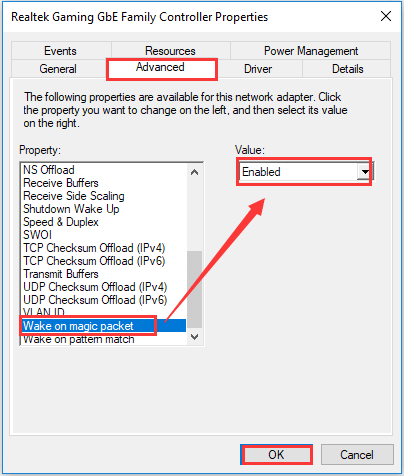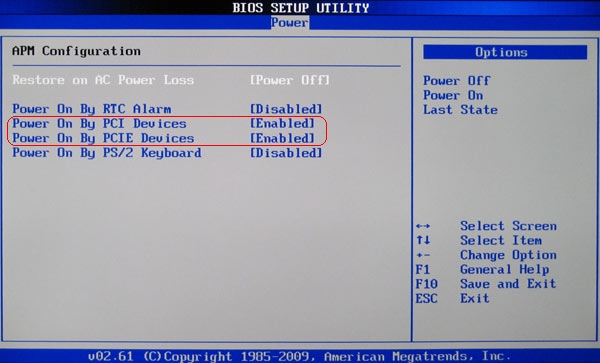

- #Remote wake up bios how to
- #Remote wake up bios install
- #Remote wake up bios driver
- #Remote wake up bios manual
Otherwise, NAME would be undefined and the rule would not run. The file name is important and must start with a number between 81 and 99 so that it runs after les, which renames interfaces with predictable names.

The following rule will turn on WOL on all network interfaces whose name matches enp*. Udev is capable of running any command as soon as a device is visible.
#Remote wake up bios install
This is an equivalent of previous systemd.link option, but uses a standalone systemd Īlternatively install the wol-systemd AUR package, then activate this new service by starting rvice. In the Match section, OriginalName= can also be used to identify the interface.This configuration applies only to the link-level, and is independent of network-level daemons such as NetworkManager or systemd-networkd.To be considered, the file name should alphabetically come before the default 99-default.link.The content of the default link file /usr/lib/systemd/network/99-default.link shipped with systemd has to be included, otherwise the interface might be misconfigured. Only the first matching file is is applied.The value g is required for WoL to work, if not, the following command enables the WoL feature in the driver: The Wake-on values define what activity triggers wake up: d (disabled), p (PHY activity), u (unicast activity), m (multicast activity), b (broadcast activity), a (ARP activity), and g (magic packet activity). # ethtool interface | grep Wake-on Supports Wake-on: pumbag To query this status or to change the settings, install ethtool, determine the name of the network interface, and query it using the command:
#Remote wake up bios driver
Software configuration Enable WoL on the network adapterĭepending on the hardware, the network driver may have WoL switched off by default. Note that some motherboards are affected by a bug that can cause immediate or random #Wake-up after shutdown whenever the BIOS WoL feature is enabled. Look for terminology such as "PCI Power up", "Allow PCI wake up event" or "Boot from PCI/PCI-E". Different motherboard manufacturers use slightly different language for this feature. The Wake-on-LAN feature also has to be enabled in the computer's BIOS. Some wireless cards have support for Wake on Wireless (WoWLAN or WoW). The target computer has to be physically connected (with a cable) to a router or to the source computer for WoL to work properly. The target computer's motherboard and Network Interface Controller have to support Wake-on-LAN.

In some BIOS setups, the ACPI option is called IPCA. If the WOL and power-off state options are not there or not accessible, try enabling ACPI/APM. You should make sure that whichever one is supported by your motherboard is enabled in the BIOS settings. If your motherboard supports WOL, this implies support of either ACPI or APM. ACPI and APM are the two main industry standards for power management (with ACPI being the newest and more advanced one). Thus, you will most likely need to enable the ACPI or APM support for the motherboard. Please note that power management features, such as WOL, are closely related to power management itself. The following motherboard settings will enable WOL.
#Remote wake up bios manual
They may also be located in a different place – refer to the motherboard manual to locate them. All relevant settings are usually found in the BIOS section called Power Management.
#Remote wake up bios how to
In this part of the document, we will tell you how to configure the Machine's BIOS to meet the requirements for the Wake-on-LAN operation by Remote Shutdown to succeed.


 0 kommentar(er)
0 kommentar(er)
